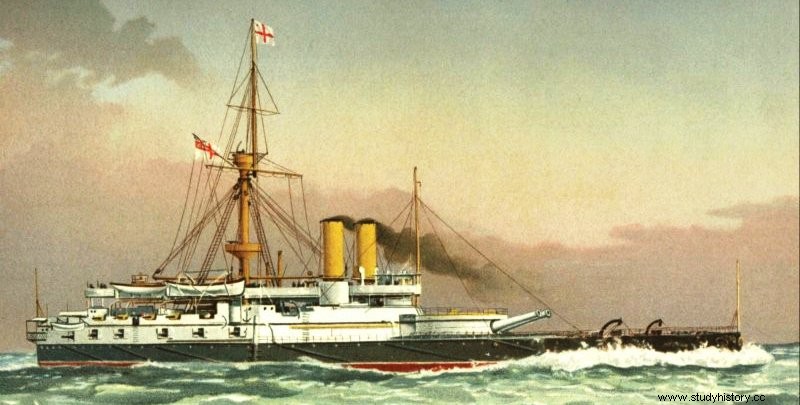Throughout history the British have stood out, among many other things, for the power of their fleet that has allowed them to control the seas and, in this way, maintain control in lands as far away as Australia or India. They have also been protagonists of two of the most famous sinkings in history:the Titanic and the Victoria. Almost everything has been said about the Titanic, so in this story we will deal with the Victoria and the importance of mathematics.

At the time of the launching of the battleship Victoria (1890), the British thought that at that time they had the most powerful warship of the moment:for its size and weight (10,400 tons) it could reach sixteen knots, the hull was protected with thick reinforced armor on the bow for possible ramming, a powerful cannon mounted on a turret with a protective shield, thirty six torpedo tubes… the pride of the British Navy. On June 22, 1893, the bulk of the British fleet, eight battleships and three cruisers, was maneuvering off the coast of Tripoli (Lebanon), where Admiral George Tryon , captain of the Victoria since 1891, was in command of the exercises. Tryon ordered a formation in two parallel lines led by the battleships Victoira and Camperdown heading out to sea. At his order, they had to make an internal 180º turn and return to port. Due to the size of the two battleships and the necessary radius of gyration, it was calculated that the minimum distance between the two ships should be almost one thousand five hundred meters. Already on the high seas, when the admiral was going to give the order to manoeuvre, Bourke , Victoria's second-in-command, and Markham , the captain of the Camperdown, warned him that the distance separating the two ships at that time, some 1,100 meters, was not enough. The captain, believing himself to be smarter than the technicians who had made the calculations and appealing to his years of experience, ordered the maneuver. At the admiral's insistence and because of obeying the orders of a superior, they carried it out. Two masses of more than ten thousand tons turned the rudder 180º at a speed of ten knots in an impossible maneuver. When Tryon realized his math error, he ordered the engine room to reverse, but stopping the hulk at that speed would take more time. The Camperdown rammed into the Victoria's starboard side, literally digging into her hull. As she withdrew, the Victoria began to sink… in just ten minutes the ship was gone. A total of three hundred and fifty-eight sailors, including Admiral Tryon, perished.

The ship was forgotten until in 2004, and after a search that lasted several years, the Lebanese diver Christian Francis he found it off the coast of Tripoli at a depth of 150 meters with almost a third of it buried at the bottom of the sea. Due to the weight of the gun turret and the steel armor she sank head first with the propellers still turning at full power, causing her to penetrate the seabed until she became embedded. To date, it is the only wreck in which the ship was left upright. So that later they say that mathematics is useless.
